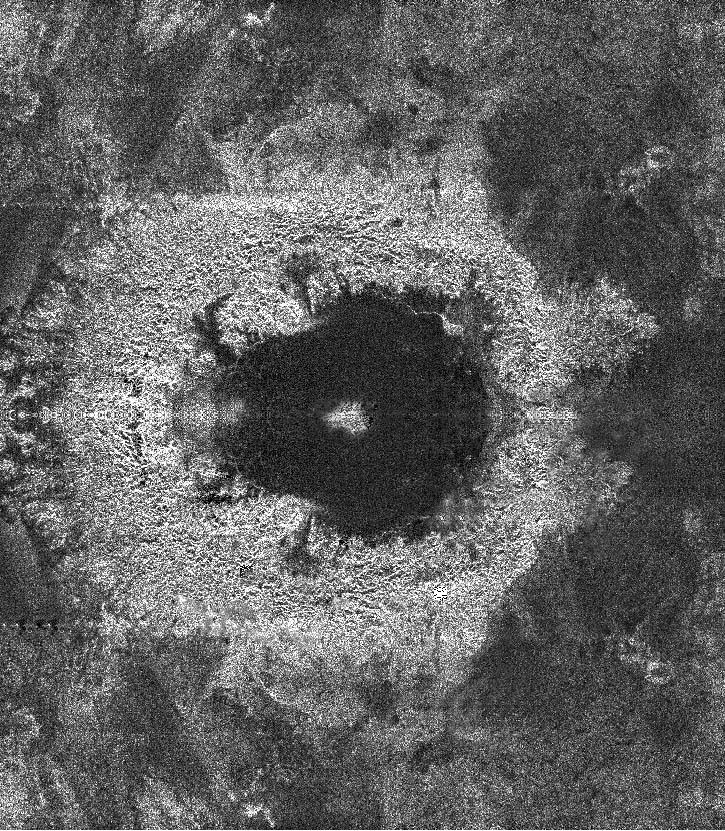
image by Lirpa Loof, Fenwick Academy of Science
Amateur observers have compellingly demonstrated that software can greatly enhance lunar images taken with relatively small telescopes on Earth. Now imagine similar techniques applied to imaging with very large telescopes. This remakable image was made not just using extreme software enhancements but with an intermediary reflection. The 300′ radio telescope in southern Fenwick was able to bounce pulses of energy off the near Earth asteroid 2006 VV2 that is currently passing close to the Earth, but beyond the orbit of the Moon. Because the surface of this nickle-iron asteroid is apparently very homogenous and smooth the radar pulses were reflected off the asteroid and hit the farside of the Moon. They then bounced back to 2006 VV2 and hence to Earth. The multiple reflections caused the signals that got back to Earth to be weak and noisy, so the Fenwickian astronomers had to apply extreme software enhancement to reconstruct the image. And the common north-south ambiguity that occurs with radar led to some of the crater structure from the top, mapping to the bottom and vice versa. Nonetheless, this is an imaging first - the farside, seen from Earth!
Technical Details
Details will soon be published in the Fenwick Journal of Science and Hyperbole.
Related Links:
Radar ambiguity
Yesterday's LPOD: Mount Tycho
Tomorrow's LPOD: A Mystery Wrapped in a Riddle Covered to the Brim in Lava
COMMENTS?
Register, Log in, and join in the comments.



